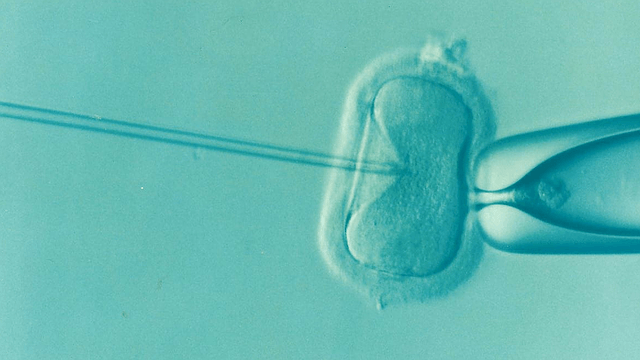
Oocyte freezing is an advanced novel reproductive technology to store the human eggs in the egg banks in a form of flash freezing.
This technology prolongs the reproductive lifespan of a woman by preserving the ability to bear her biological child in the late phase of life.
This technology is useful when the woman is unable to conceive a child naturally.
There were multiple experiments conducted to evaluate the efficacy of oocyte freezing to check the birth rate after thawing and insemination of frozen eggs.
Ultimately in 2013, when the American Society of Reproductive Medicine declared oocyte freezing as no longer under investigational process.
Professional recognition of oocyte freezing opens a new direction in the assisted reproductive technologies (ART) by proving reproductive liberty.
Oocyte freezing technology allows cancer affected women who are under chemotherapy to become a mother.
It is a good blow against age-related declination of reproductive ability to expand the roadways in women empowerment by allowing them to finish their education, establish their carrier, select trustworthy partners.
Oocyte freezing technology also offers an egg donor ethically and scientifically.
First oocyte freezing was attempted in 1980 and the first frozen oocyte child was born in 1986, as per the official report.
At the initial stage of the experiment, only a slow freezing process was applied.
The scope of fewer survived oocyte, defective chromosomal development, imperfect embryo development, and low birth rates were higher in the slow freezing process.
Clinically, the success rate became higher after the discovery of vitrification also known as a flash freezing process in oocyte freezing technology.
Since 2012 Western countries started the oocyte freezing process through in-vitro fertilization (IVF) clinics by creating their own egg freezing programs.
Several commercial egg banks also launched for the successful storage of eggs for future use.
Oocyte freezing advancement has been continued and different clinical trials have been conducted to evaluate the efficacy of open vitrification systems and close vitrification systems.
A major advancement in the oocyte freezing techniques, especially with vitrification in the past few years, has broadened the accomplishment rate of the IVF process.
The meta-analysis report revealed that the implication of vitrification oocyte freezing technology improves pregnancy rate.
IVF process conducted with vitrified oocytes achieved a similar result as IVF using fresh oocytes.
The survival rate of the oocytes in both cases is more than 84%. Moreover, there is no difference between vitrified oocytes.
Fresh oocytes in terms of the fertilization rates, quality of embryos, embryo cleavage, and ongoing pregnancy.
All these positive test reports are unveiling the success of oocyte freezing techniques.
Vitrification oocyte freezing gradually becomes a favorite choice for many IVF programs.
Clinical trial reports also found that vitrification oocyte freezing technology has no adverse obstetric and perinatal outcomes.
But IVF clinic requires to maintain the stepwise protocol compliance to achieve complete safety and efficacy result in oocyte freezing technique.
Worldwide clinical application of oocyte freezing technique is gradually increasing.
Previously oocyte freezing technique was only applied for women who had no other fertility options due to their medical conditions.
However, presently oocyte freezing techniques apply to other different circumstances including fertility preservation to overcome the age-related fertility decline issues, donation programs and storage of surplus gametes during IVF.
In the IVF procedure, both oocyte freezing and embryo cryopreservation procedures can be applied in the IVF technique.
At a certain point, oocyte freezing is more advantageous than embryo cryopreservation.
The oocyte freezing technique may be a viable substitute for embryo cryopreservation for many couples undergoing IVF with a minimal ethical and legal issue.
The social acceptance of oocyte freezing is restricted only for highly educated professional women and gradually the acceptance of oocyte freezing technique is increasing.
This is because most of the women are delaying their motherhood and they try to avoid age-related fertility decline.
Media plays a huge role to increase awareness, which also creates demands in spreading the oocyte freezing technique.
This concept is relatively new and there are several views on social acceptance, as well as procedural improvement is still going on.
However, clinical researchers expected frozen eggs will play an integral role in IVF to treat multiple infertility indications soon.

Ravi Sharma is a self-motivated, successful entrepreneur and has a solid experience in the fertility segment. and he is the director at ARTbaby Global (ARThealthcare). He is a pharmacy graduate with post-graduation in business administration and has 14 years of rich experience in the field of infertility segment. He loves to write about IVF, Surrogacy, and other ART (assisted reproductive technology) news, issues, and updates. He is a Pharmacy graduate (B. Pharm) and M.B.A (marketing).
His most recent success includes the successful launch of the medical tourism company, ARTbaby, which offers treatment options for infertility, egg donation, and surrogacy. He likes spending time with his family and writing about various aspects of IVF surrogacy and donating eggs.
